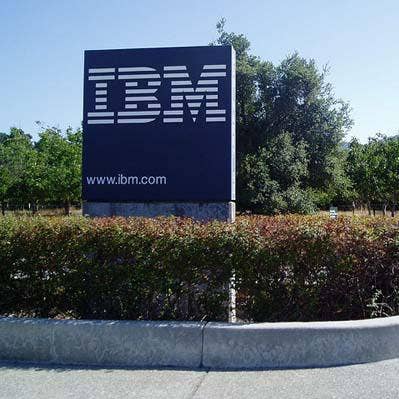IBM: Bank of America Know-How Will Differentiate Financial Services Cloud
The coming public cloud environment geared for financial institutions, as well as SaaS vendors that serve them, looks to ease migrating and operating highly regulated workloads. Bank of America is a partner in developing the processes, and an anchor tenant.

IBM, by teaming with Bank of America, is leveraging the financial giant's deep industry knowledge in hosting highly regulated workloads to develop the process framework of a new financial services cloud.
Once the product launches at a still unspecified date, it will be the first "financial services-ready public cloud" on the market, with Bank of America not only a development partner but also an anchor tenant, Don Boulia, IBM's general manager for global ISV partnerships, told CRN.
Obtaining all the certifications required by the industry is just a first step to building what will be a unique cloud service offered to financial institutions, as well as ISVs that build applications serving that category of customers, Boulia told CRN.
[Related: IBM, AT&T Expand Alliance To Partner On Cloud, SDN]
The goal is to cast a framework that makes it easier for financial services companies to onboard to public cloud by automatically enforcing the right controls and best practices for compliance, security, risk management and data protection, he said.
For banks, "there's a big need to do that effectively and not spend all your time and effort to validate those environments and make sure they're ready for those workloads," Boulia told CRN.
ISVs can also build fintech solutions embedded in the compliant environment, which IBM hopes will foster an ecosystem of Software-as-a-Service vendors.
"The value is removing uncertainty for both financial institutions and for ISVs," Boulia said, so they don’t have to spend time and effort re-inventing requirements and processes.
At the same time, IBM Cloud infrastructure provides the core foundation of security fundamentals, he said.
Bank of America's expertise has been critical in validating that IBM is putting in the right set of controls for the industry. The bank has a rigorous set of processes it currently follows in its on-premises environments, and those are being emulated by IBM developers, he said.
"We're using those practices as the guideline for what we make available in the public cloud," Boulia told CRN.
Promontory, a financial services compliance consultancy, has also been enlisted in assisting IBM navigate hundreds of bank policies, regulations and best practices, he said.
Currently, onboarding financial workloads to a secure public cloud environment, takes a year to 18 months, as those customers must scrupulously mark off detailed checklists.
IBM's coming financial services cloud will drastically reduce that time with its automated regulatory framework, as well as what will eventually become a catalog of workloads and ISV applications that have already been through the process.
IBM hopes that by accelerating time to value, it will usher in the next wave of public cloud adoption, as 80 percent of potential enterprise workloads still remain on-premises.
While no IBM Business Partners have yet to get involved, the financial services-ready cloud will be an open environment for channel partners who can meet banking privacy requirements.
Michael Asher, CIO for RFA, a New York-based MSP that has a robust financial services practice, thinks IBM can fill a unique position in the market as a hyperscaler if it can overcome some of the inherent challenges of serving the industry.
RFA, which doesn't work with IBM, offers its own private cloud platform serving equity firms and hedge funds, and integrates solutions for those customers to make them adaptable to public cloud.
While RFA and other MSPs offer cloud services to bankers on a much-smaller scale, IBM "will take that on steroids," Asher told CRN.
Financial institutions once strongly preferred on-premises environments, with the upfront capital needed to deploy them. But they're warming to hosted cloud services, he said.
IBM can drive demand, and revenue, for its coming cloud by integrating functionality from other products. That could involve providing robust analytics and artificial intelligence for data mining, advanced reporting capabilities, connecting on-demand to data from financial exchanges, and even ultimately creating a data marketplace where clients can share information and make it available to third-parties, Asher said.
"The possibility they will take this security, compliance, analytics, maybe even mining data through AI and Watson and offer that as a service opens the door to new possibilities to how clients can generate revenue with their data," he told CRN.
But behemoths like IBM are often challenged to match smaller providers on cost.
For larger banks, IBM's brand will likely be a big draw, but name recognition might not go far in pulling smaller customers from prime brokers and MSPs, Asher said.